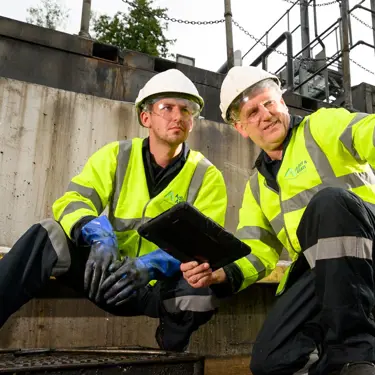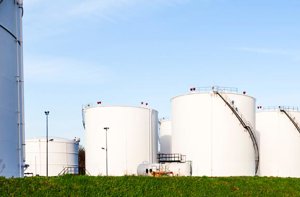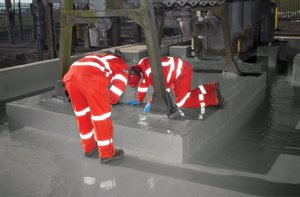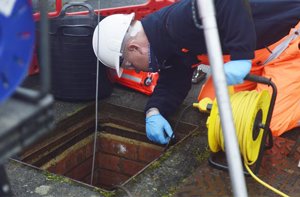
Oil separator installation
We help operators of sites with oil storage remain compliant with current legislation by specifying, installing, and commissioning your separator and alarm so that you can reduce the risk of an environmental incident, regulatory fines, operational downtime, and reputation damage.
Legislation
The current standard by which separators should be designed and tested is BS EN 858-1:2002 Separator systems for light liquids (e.g. oil and petrol) - Principles of product design, performance and testing, marking and quality control.
GPP3: Use and Design of Separators In Surface Water Drainage Systems is based on BS EN 858-1:2002 and states:
- Where separators are needed.
- How to choose the right type of separator.
- The different types of separators.
- Maintenance and use.
- Incident response.
Consider the local circumstances and risk factors including:
- the discharge point of your proposed separator
- the environmental sensitivity of your location
- activities on your site
Which separator is right for my site?
Separators are split into class 1 and class 2 and can be full retention or bypass.
Class 1 separator
- Designed to achieve a discharge concentration of less than 5mg/ltr of oil in the discharge.
- Class 1 allows discharge to surface or foul water drainage.
- Class 1 separator will have a coalescing filter present.
- Class 1 full retention separator with have an Automatic Closure Device (ACD) which when the oil storage capacity is reached will close automatically.
Class 2 separator
- Designed to achieve a discharge concentration of less than 100mg/ltr of oil in the discharge.
- Class 2 can only allow discharge to foul sewer.
- Class 2 full retention separator with have an Automatic Closure Device (ACD) which when the oil storage capacity is reached will close automatically.
By-pass
Description: Treat all flows generated by rainfall rates of up to 6.5mm/hr. These separators are used when it is considered an acceptable risk not to provide full treatment for high flows, for example where only small spillages occur and the risk of spillage is small.
A Class 1 bypass separator will have a coalescing filter present.
Application areas: Car parks / roadways & major roads / light industrial and goods yard.
Full retention
Description: Treat the full flow that can be delivered by a drainage system. Full retention separators are used where there is a risk of regular contamination with oil and a foreseeable risk of significant spillages eg. vehicle maintenance areas.
Application areas: Sites with high risk of contamination / fuel storage depots / refuelling facilities / vehicle maintenance areas or workshops
Specification
We can help you to specify the right class and type of separator for your unique operation. Depending on the class required, the type and whether you wish to discharge into the foul or surface water will all affect the specification.
Any new separators must comply with BS EN 858-1:2002 and be certified that is has been independently tested for the particular discharge.
The Environment Agency (EA) or local water authority may wish to input into which separator is specified for your site. You should discuss with your local water authority and EA to apply for a separator to be installed.
Our experts have been specifying and testing separators for 20 + years and we can also liaise with the EA or local water authority on your behalf.
Installation
Our civil engineering teams can excavate the ground and install shuttering if required. We will also specify the correct concrete to surround the separator and manage the install carefully to avoid damage to the tank. We need to ensure the correct pressure is maintained throughout the install by adding water to the tank as the concrete is being poured.
There are many examples of separators that have collapsed during install due to the pressure not being maintained. This has significant cost implications and can cause downtime on your site. Our experts have the competency to ensure a smooth install.
We can also manage the transportation requirements to get your new separator to site.
Commissioning
Following installation your separator requires commissioning by an independent competent expert to ensure it is compliant to the original design before it can be used.
Our experts will use their confined space entry qualifications to enter the tank and perform commissioning to ensure the separator is fit for purpose.
First we are checking that the separator has been installed correctly and ensure all components are attached to outside shell.
We will check inside the separator coalescing filter and Automatic Closure Device (ACD) to ensure it is sitting correctly.
We will check all pipework is fully sealed and the alarm control device is engaged and fully compliant.
We will also engage the ACD to check what is being discharged out of the separator. If it discharges more than 15 litres in 15 mins it is a failed system.
Separator alarm systems
It is a requirement for all separators to have an alarm system on both collected oil and high liquid level.
We can supply and install separator alarms to ensure you remain compliant with BS EN 858-2:2003.
A control panel is required for the alarm and is generally located within the building or outside in weatherproof kiosk. Our electrical experts can connect up and commission your separator alarm with the control panel.
Ethanol coalescing filter
Our award-winning Ethanol Coalescing Filter® attaches to your existing separator and removes over 90 per cent of toxic BTEX emissions from new formulation biofuels.
We can install this filter into a new separator or retrofit to an existing separator installation.
BoxSep
Our BoxSep unit provides all the features of a traditional separator but is tailor-made for restricted space areas. It’s the ideal solution to curb ground contamination in locations that can’t accommodate a traditional separator installation.
The lightweight, simple-to-install system works as a typical separator and requires no extensive civil engineering. BoxSep detects and prevents hazardous oil pollution by working in conjunction with a Bund Water Control Unit (BWCU) and features an additional baffle to allow for low-level outlet applications.
You might also be interested in...
Keep your business compliant and protect the environment while reducing the risk of operational downtime
Find out how Adler and Allan reduce your risk and support you on your journey to Net-Zero through the management and maintenance of assets.
Contact our experts




